Main dimensions of the kabanchik tile
Kabanchik is a rectangular ceramic tile resembling a brick. Initially, it was used for cladding buildings, then migrated to the walls of the subway, which is why in the USA and Great Britain it is called “subway”.
The hog has three main sizes:
- small 7.5×10 cm;
- large 10×20 (10×30) cm;
- large 28.5×8.5 cm.
Since large tiles visually reduce small kitchens, the standard size of 10×20 cm is used for them. Any product will do in spacious rooms.
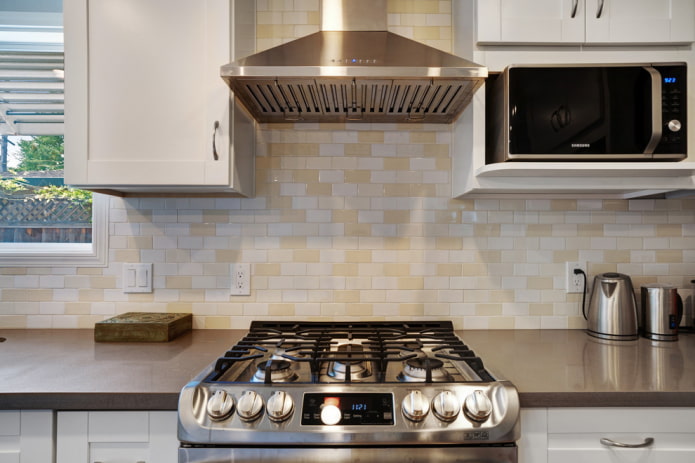
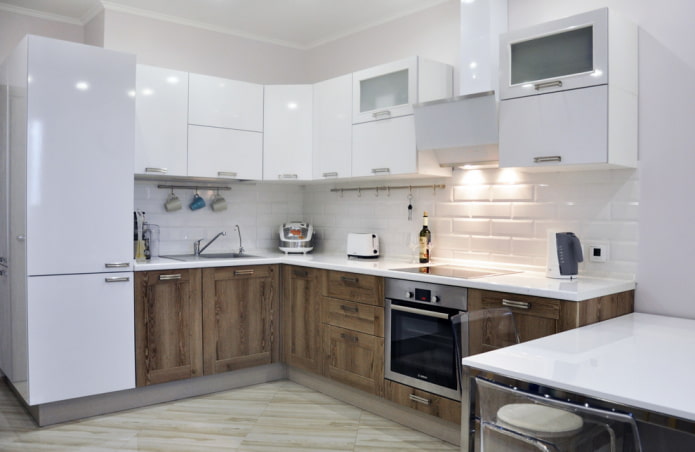
Types of hog tiles
A distinctive feature of the hog is the chamfers – beveled edges running along the perimeter.
With a chamfer
Chamfers (or facets) give the product volume. The glazed surface looks especially impressive with them.
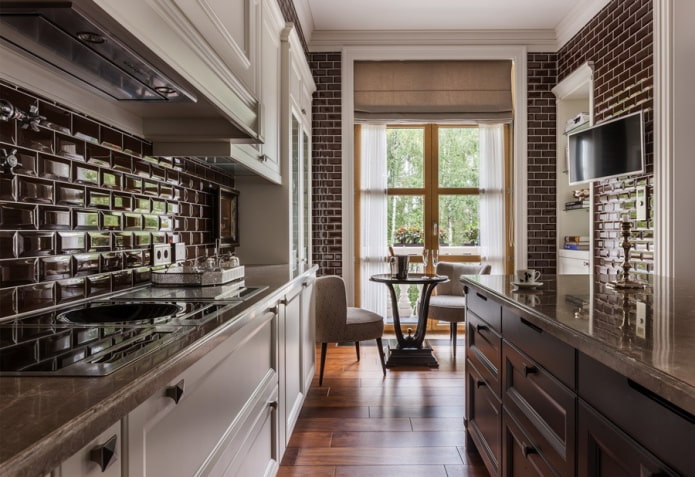
The photo shows a kitchen in chocolate shades, faced with convex tiles with bevels.
Without bevel
Flat products without bevels look laconic and are used if you do not want to overload the space with relief textures.
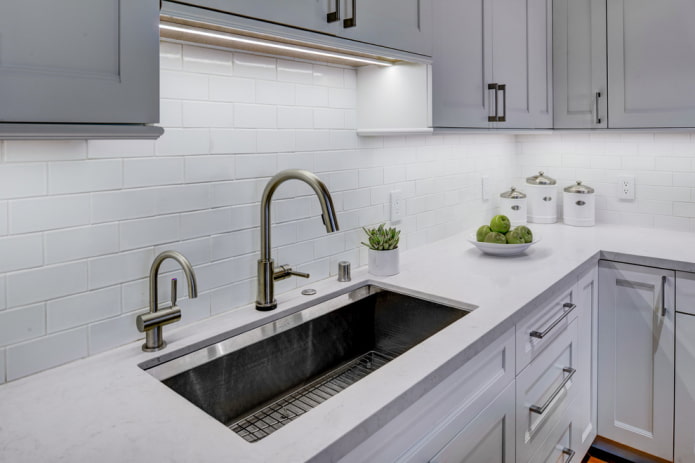
Color of apron made of tiles
Since the demand for boar is high, manufacturers are releasing new types of tiles, using the entire color palette, and also playing with textures, imitating natural materials.
White
This color remains invariably popular due to its versatility. Perfectly harmonizes with any shade, does not attract special attention, adding “air”.
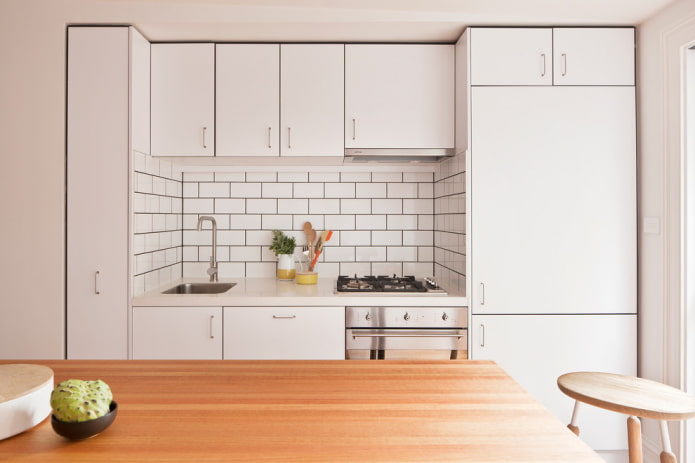
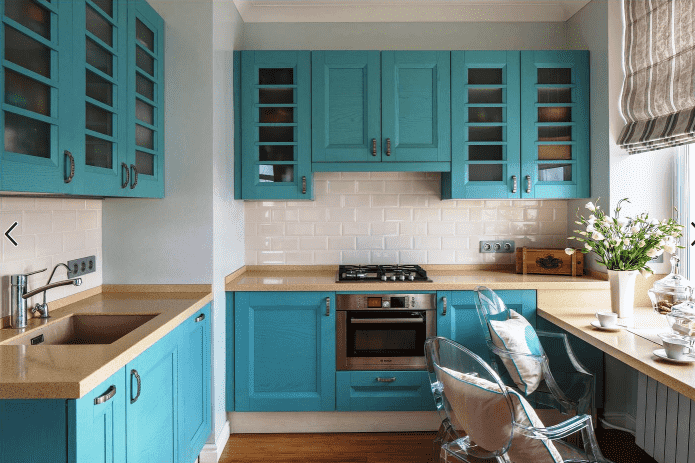
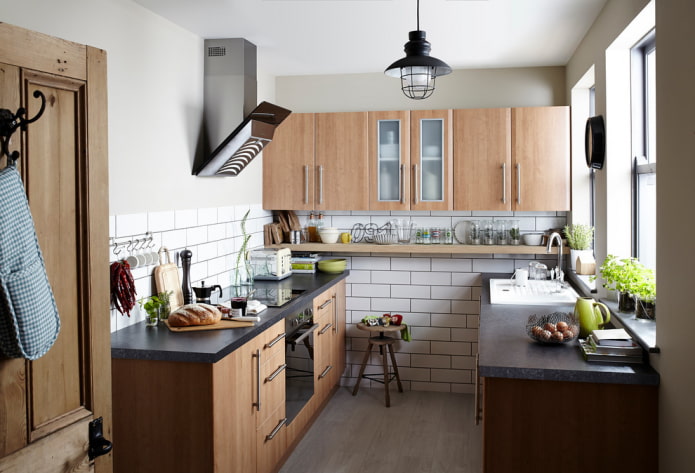
The photo shows a kitchen with a white apron, originally located on the lower part of the wall.
Black
The deep black color of the apron is a bold and incredibly stylish way to highlight the work space. The dark hog looks luxurious, but has a small drawback: any dirt is clearly visible on its glossy surface.
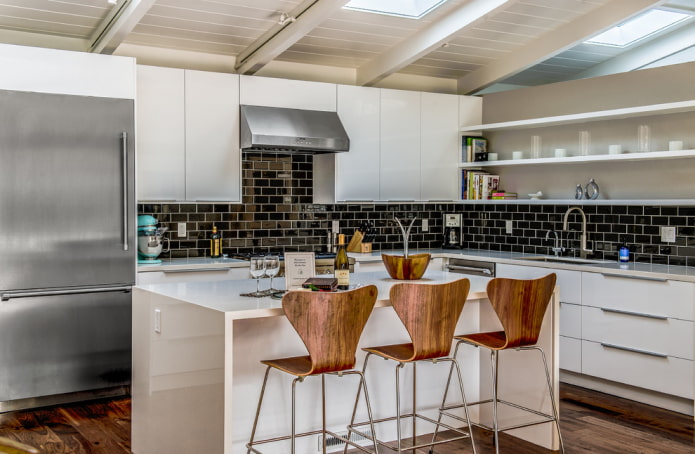
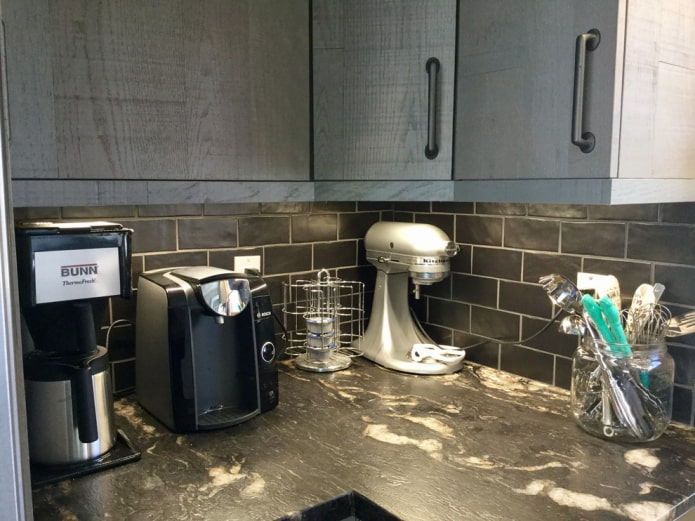

The photo shows a youth kitchen, in which not only the apron, but also the wall above the doorway is decorated with a hog.
Blue
Tiles of sky-blue or dark blue color look original and add freshness to the interior.
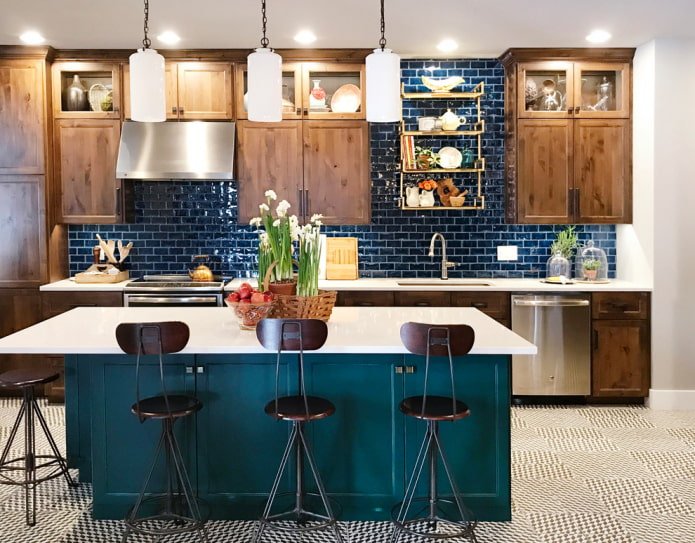
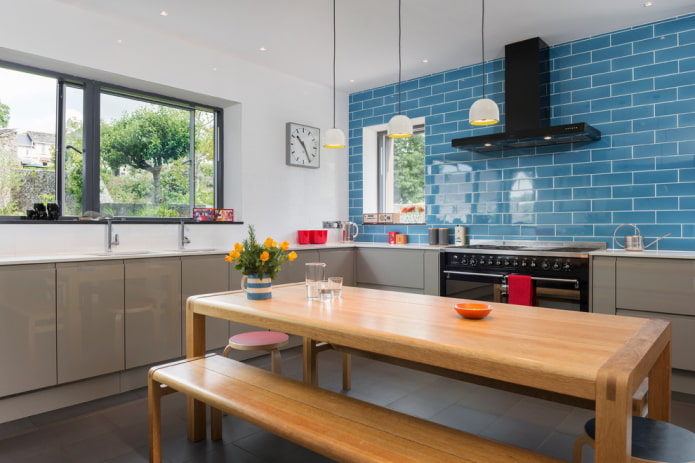
Beige
A neutral-colored apron fits well into a kitchen in pastel (milky, blue) tones. Sometimes it serves as a background for bright furnishings.
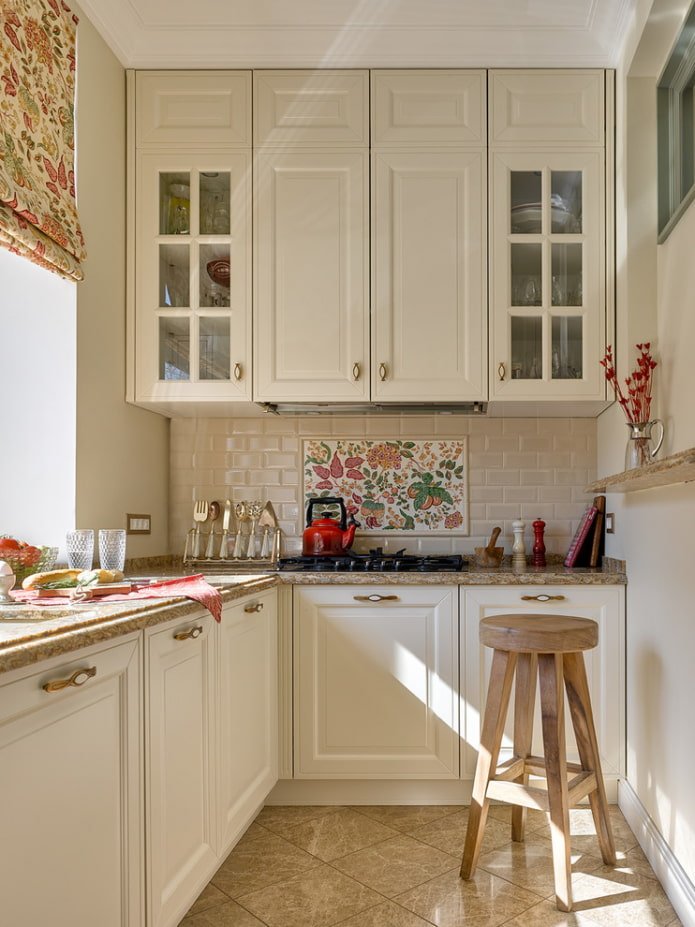

Gray
Another universal color of the apron, which suits both light and dark facades of the kitchen set.

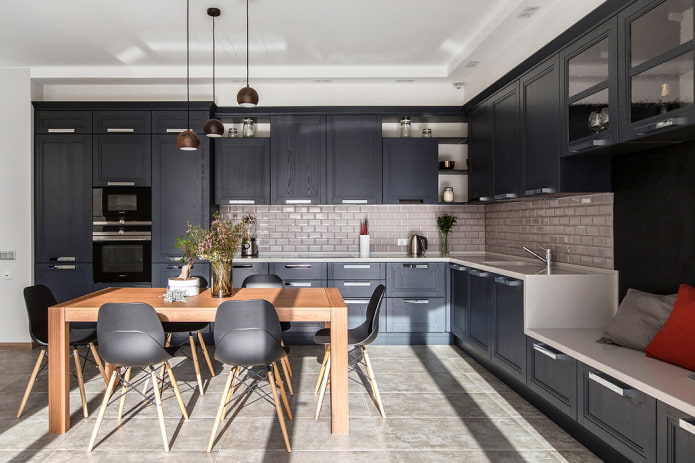
Colored
Color gives the kitchen a special character. A multi-colored apron will allow you to create a unique interior. And red will attract attention and create an atmosphere of hospitality.
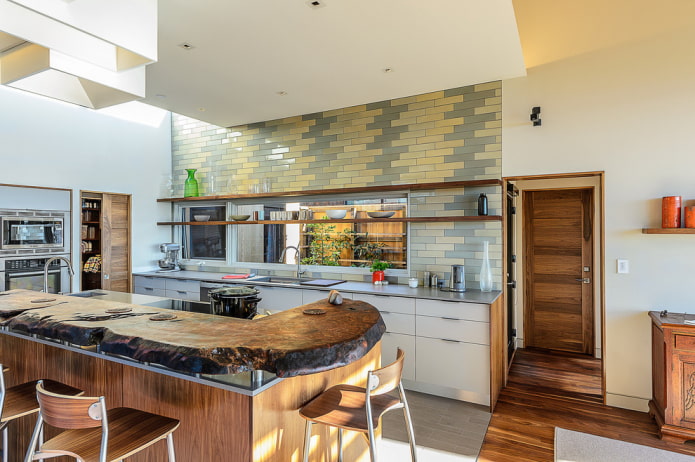
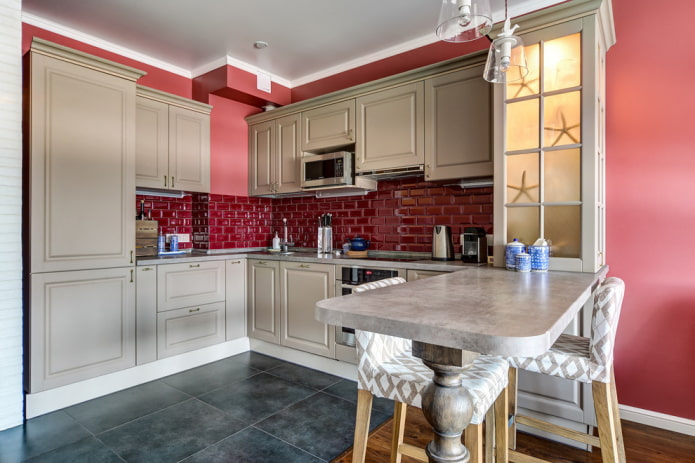
Orange
If the kitchen lacks light and comfort, an orange apron will be a great solution.

Yellow
The sunny yellow color of the apron adds cheerfulness to the interior or serves as a bright accent.
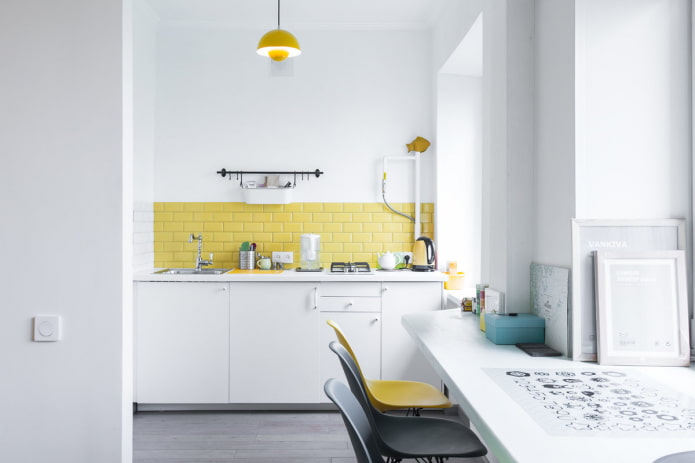
Green
Olive, pistachio, mint, light green – shades of green in the kitchen interior give a feeling of calm and natural harmony, improve mood.
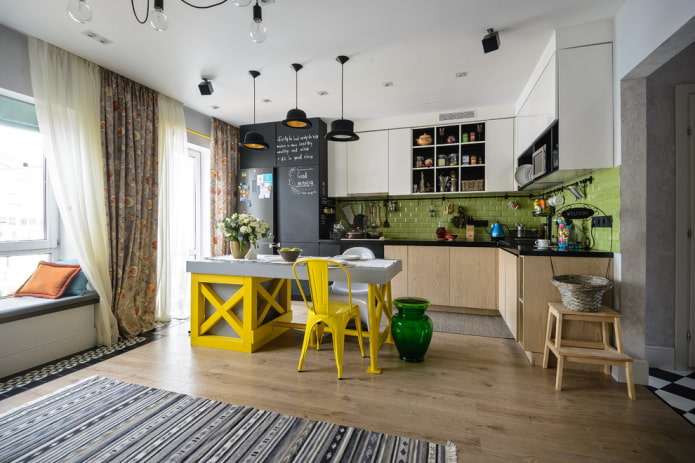
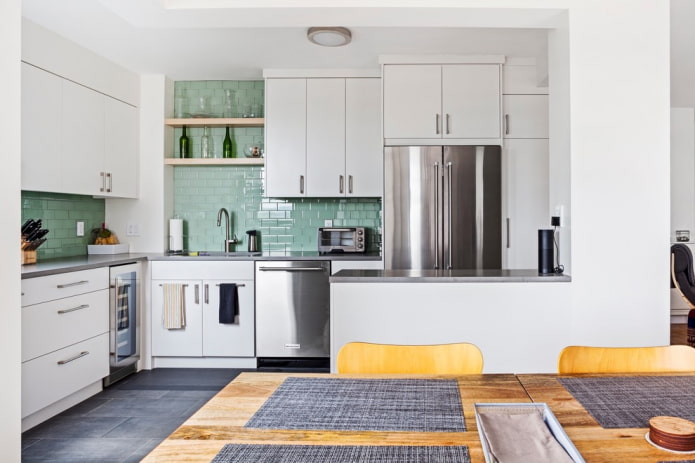
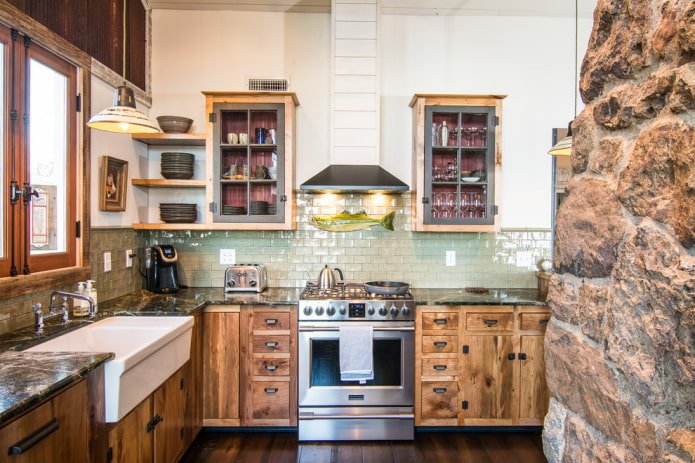
The photo shows a kitchen with natural motifs. The olive apron with a border harmonizes with the natural textures of the countertop and cabinets: marble and wood.
Lilac
This shade is rarely used for hog tiles. The lilac color gives the kitchen not only tenderness, but also uniqueness.
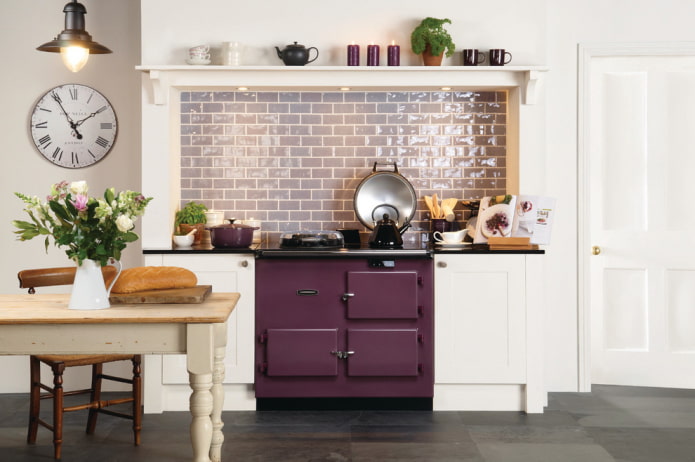
Apron design
A kitchen apron laid in a hog pattern can stretch along the corner or occupy the entire wall. Depending on the area allocated for it, different types of coatings and additional decor are selected.
If the set occupies the entire wall, it is recommended to use glazed products. The glossy finish effectively reflects light, visually expanding the space.
A hog with a matte finish is less common. It is used in interiors where gloss is stylistically inappropriate, or in kitchens with an abundance of shiny surfaces.
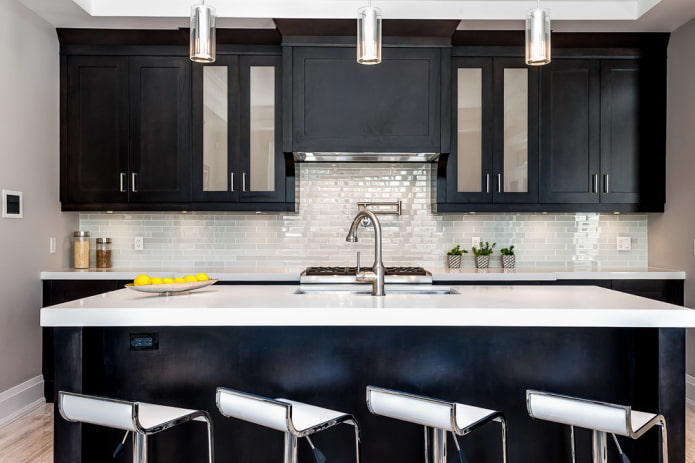
The photo shows a black kitchen, the glossy apron of which is favorably illuminated by built-in lamps.
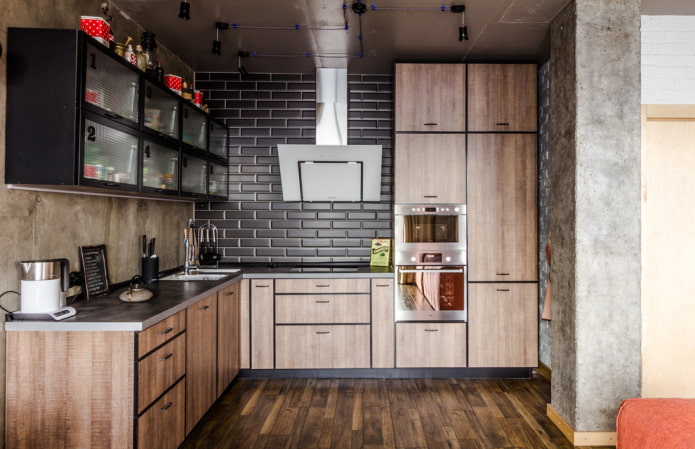
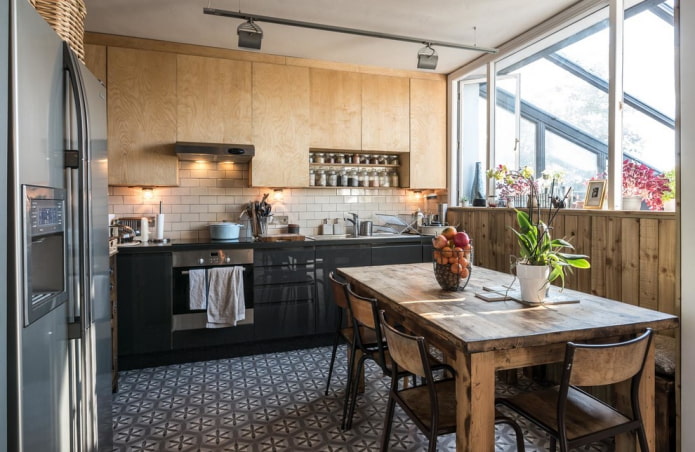
Kabanchik can be easily combined with other tiles, for example, when you need to highlight the area between the stove and the hood. The mosaic fits harmoniously into the apron in a thin strip.
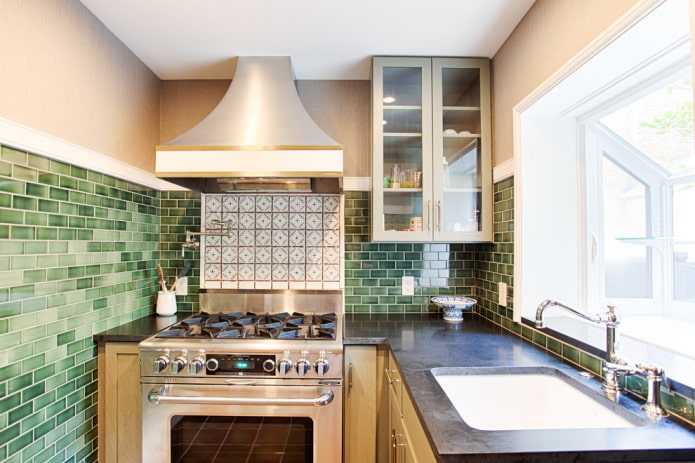
The photo shows a small kitchen decorated with an emerald-colored apron and patterned tiles in the stove area.
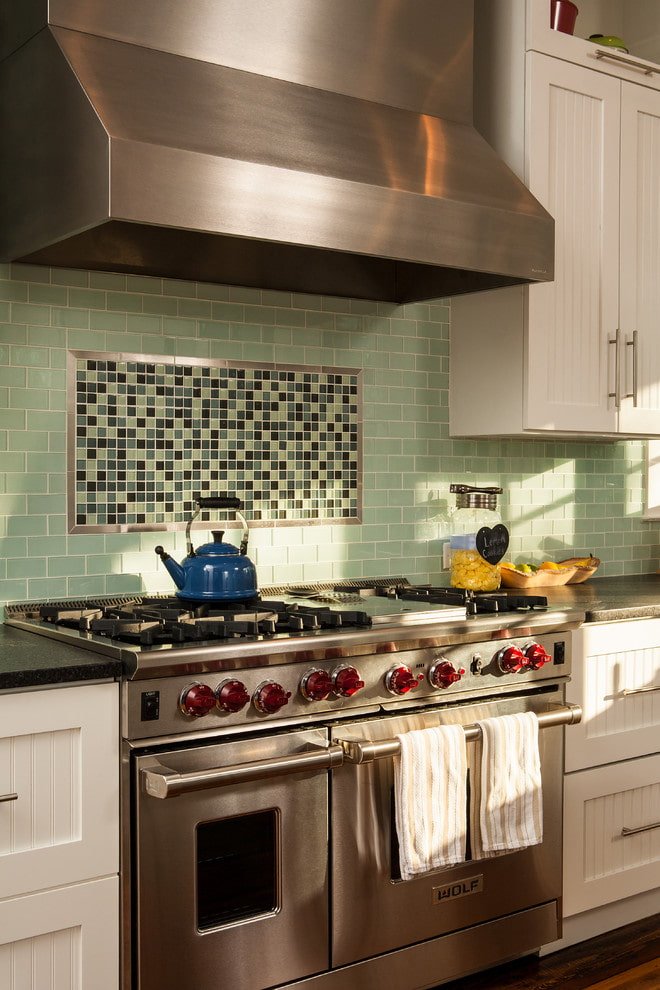
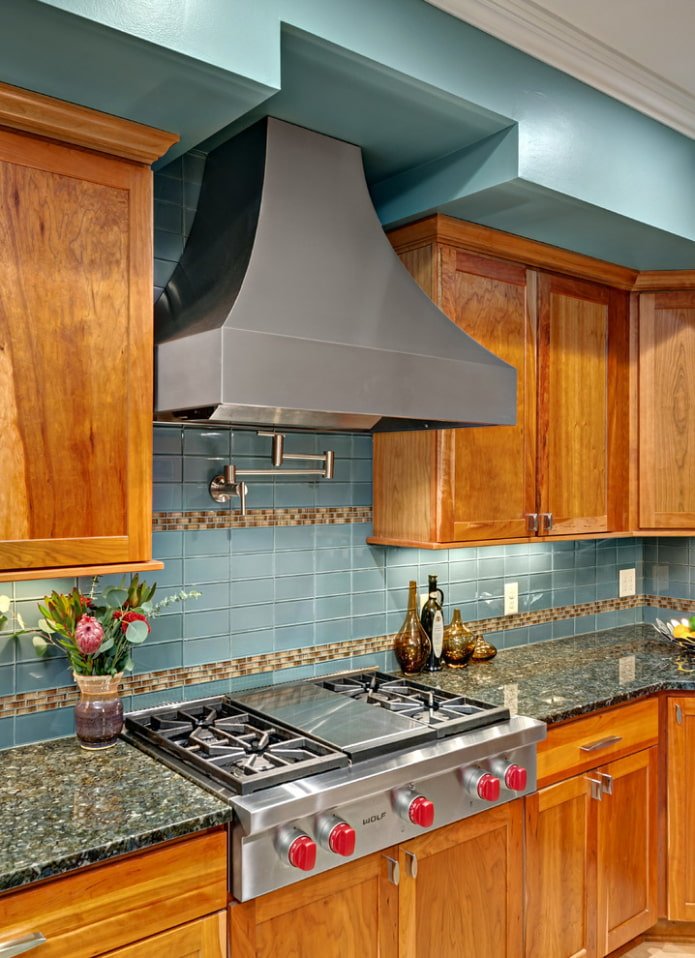
You can also combine different colors and layout methods.
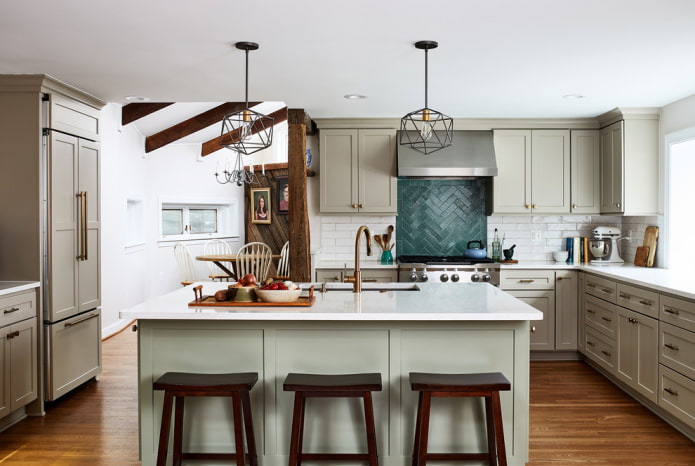
Photo of tiles with a pattern
There are products, like ordinary tiles, that imitate natural textures: marble, brick.
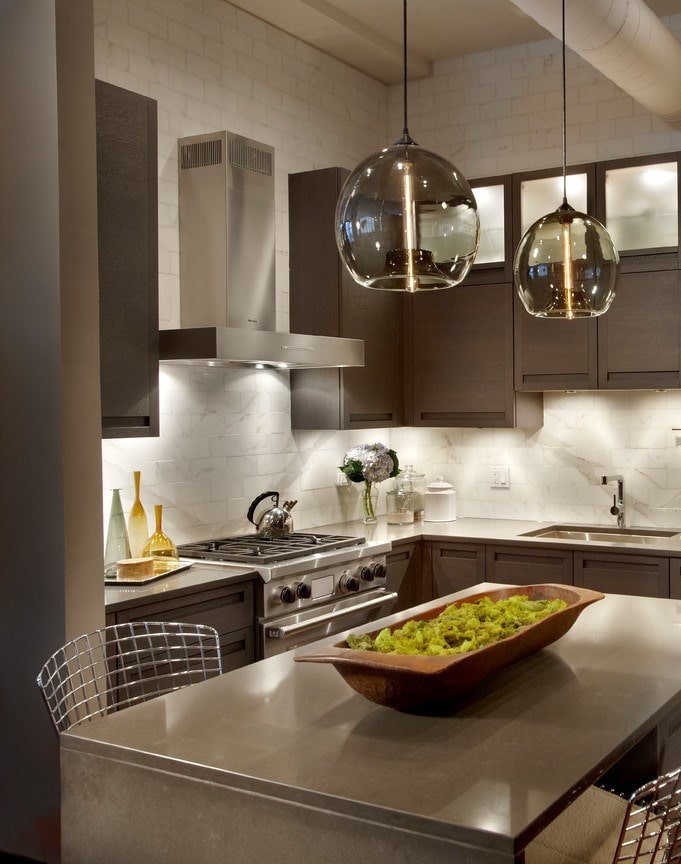
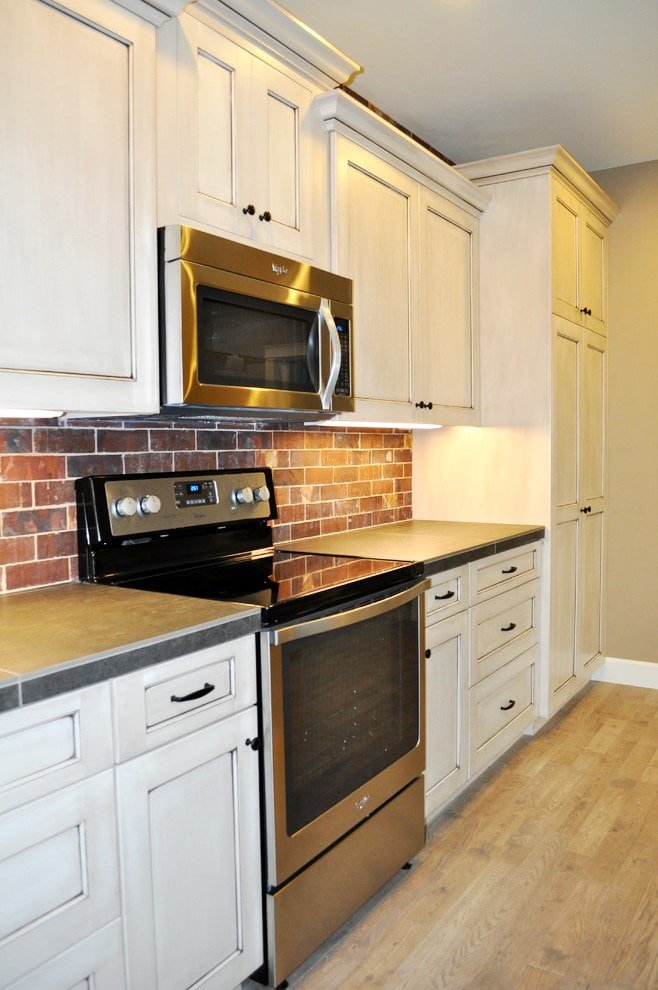
A hog with an ornament, pattern or inscriptions is often found in the Scandinavian style or Provence.
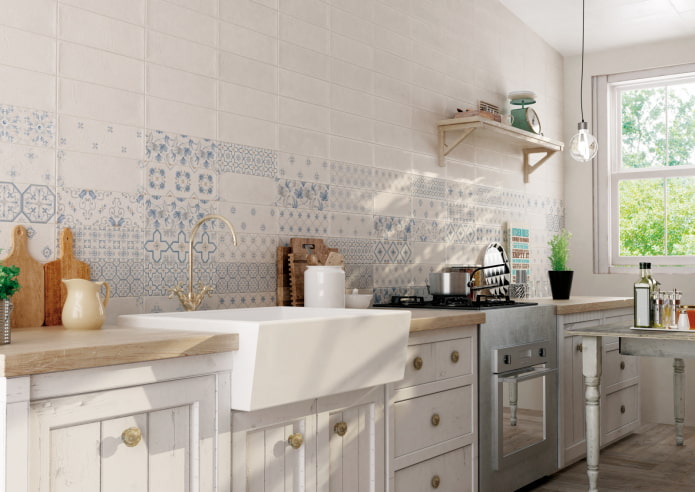
What kind of grout should I choose for a backsplash tile?
First of all, it is worth considering its composition: grout based on epoxy resins, which is resistant to dirt, is best suited for the kitchen. Speaking of palette, for a single-color neutral apron it is recommended to choose a grout similar in color to the tile itself. White and gray grout are considered universal.
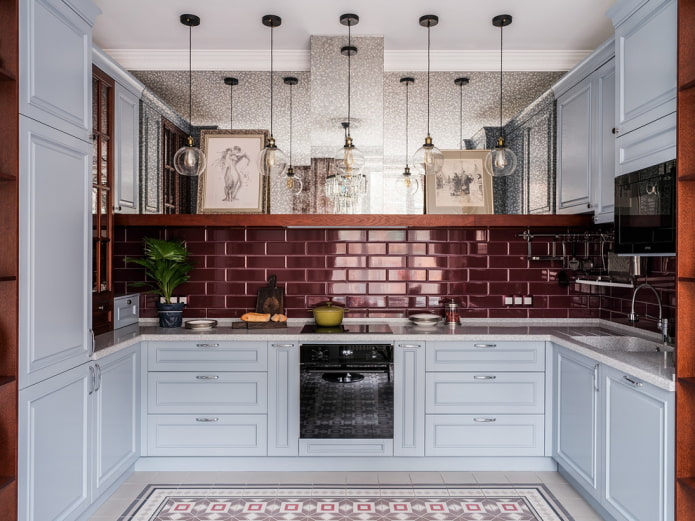
The photo shows a burgundy-colored apron with grout in the same tone, which “dissolves” the seams without drawing attention to them.
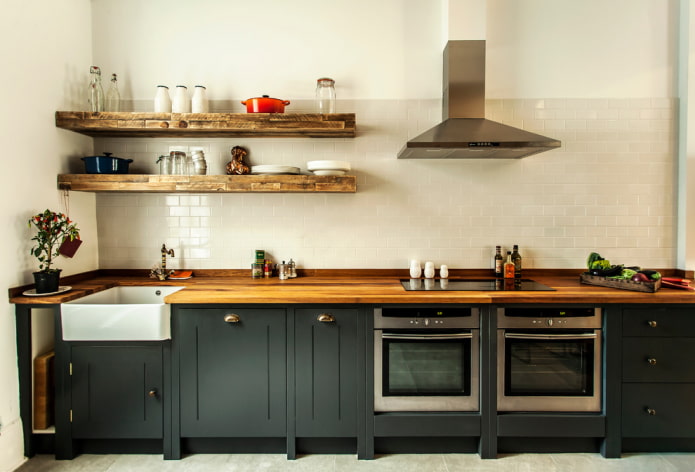

If you want to make an accent on the apron, you can use contrasting combinations. For example, black grout on white tiles will add graphic quality to the interior. If the tiles are dark, white seams will highlight the texture or an interesting shade.
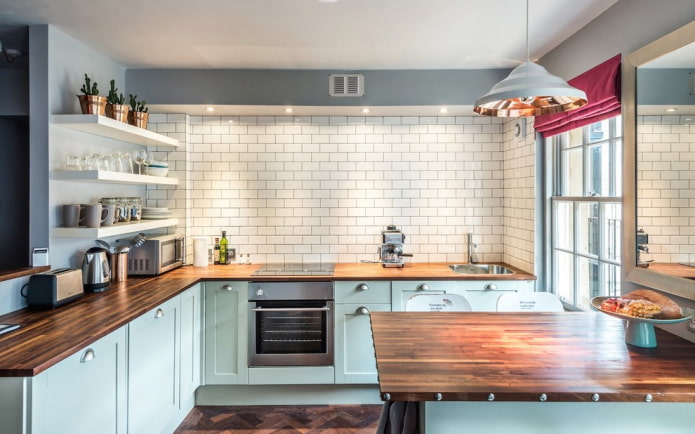
The photo shows an example of contrasting grout. Without it, the wall above the work area would look empty and unfinished.
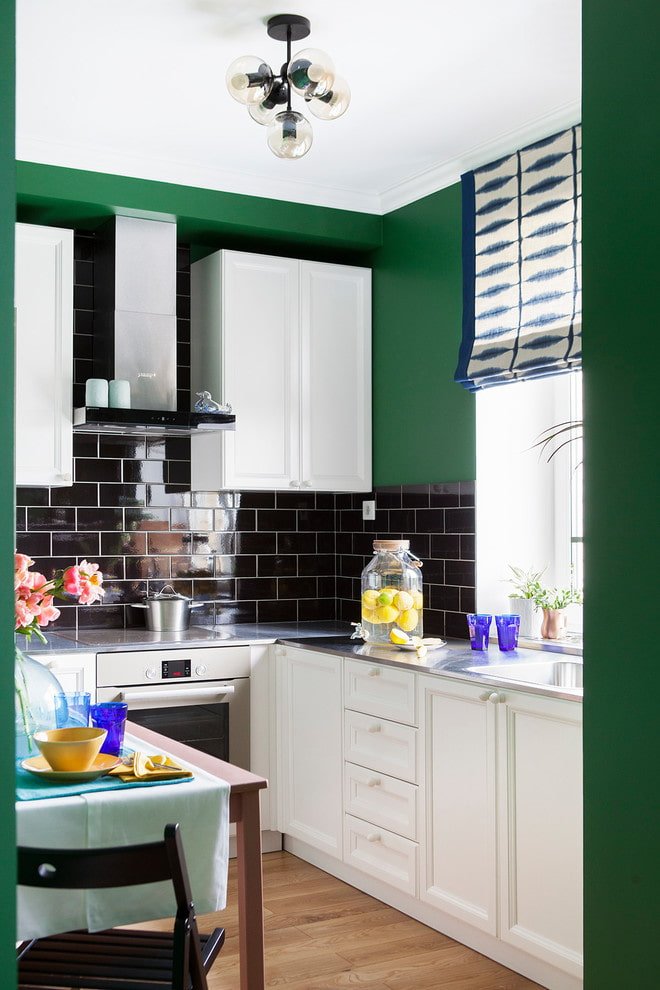
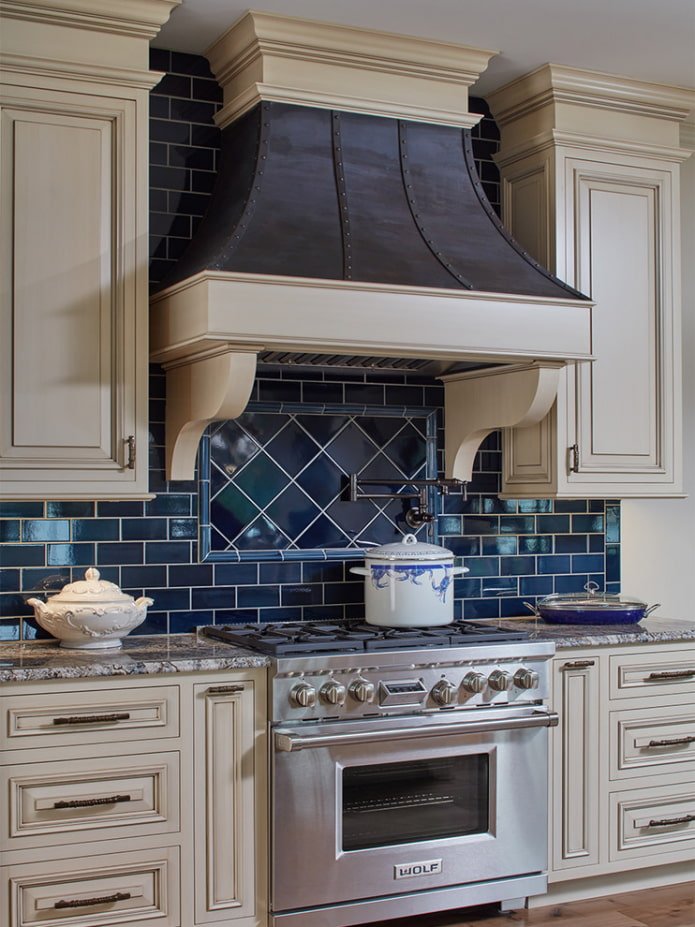
Options for laying out a hog tile
If you use plastic panels that imitate a hog, there will be only two options for cladding: vertical and horizontal. But the rectangular shape of individual tile elements allows them to be laid in several ways:
- Vertical with offset. A method that can visually lengthen a tiled wall.
- Horizontal staggered. The most common option is when tiles are laid with an offset, like bricks.
- Horizontal stacked. Accurate “seam in seam” method with an emphasis on geometric accuracy.
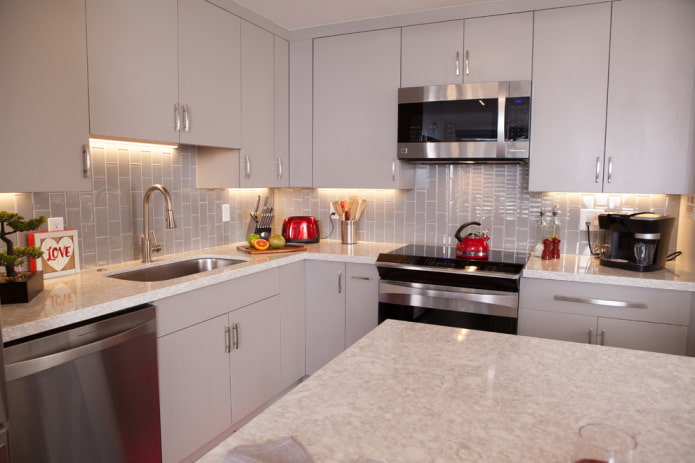
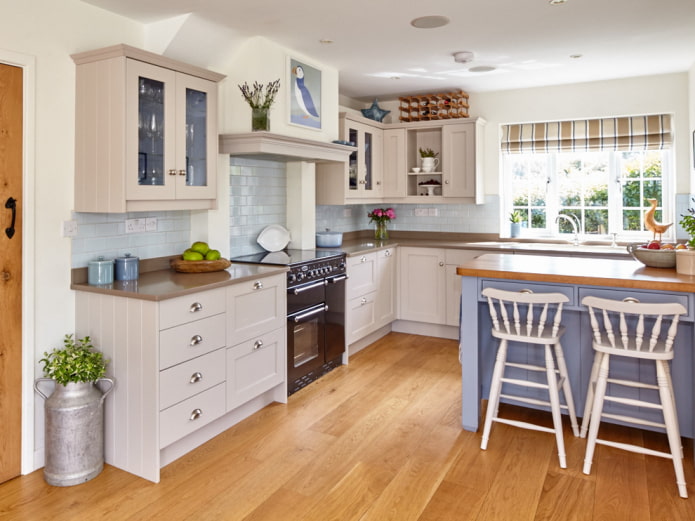
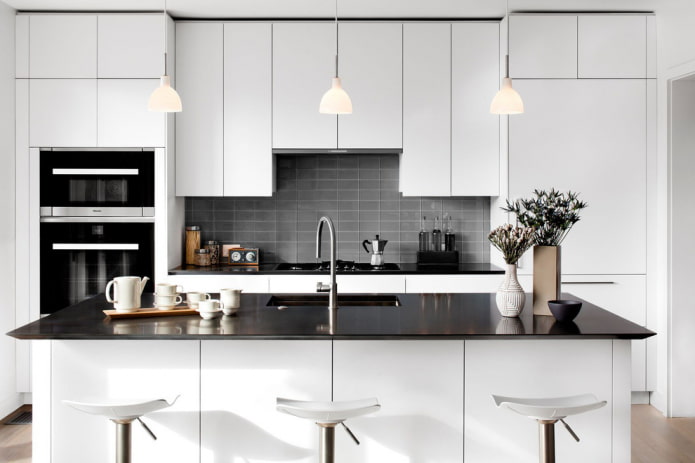
- Vertical stacking. A method designed to emphasize the severity of lines in the interior.
- Diagonally. Elements are placed at an angle of 45°. This option is suitable for small kitchens, as it visually expands the apron area.
- Herringbone. The tiles are laid in a zigzag pattern and form a beautiful pattern.
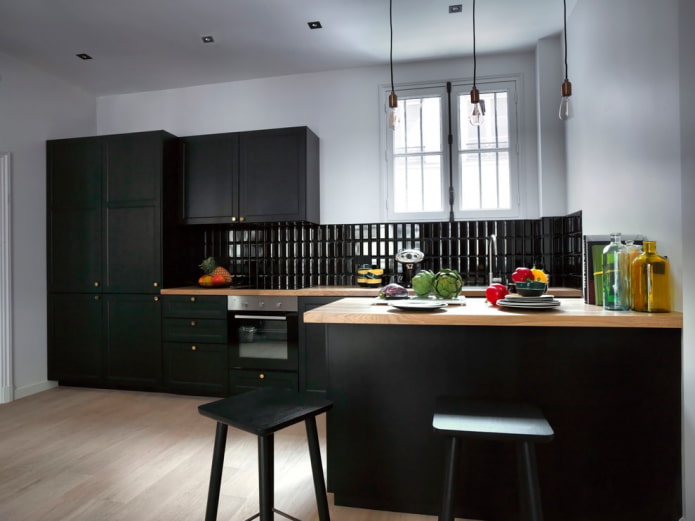
The photo shows a black vertical pig, which adds respectability to the interior.
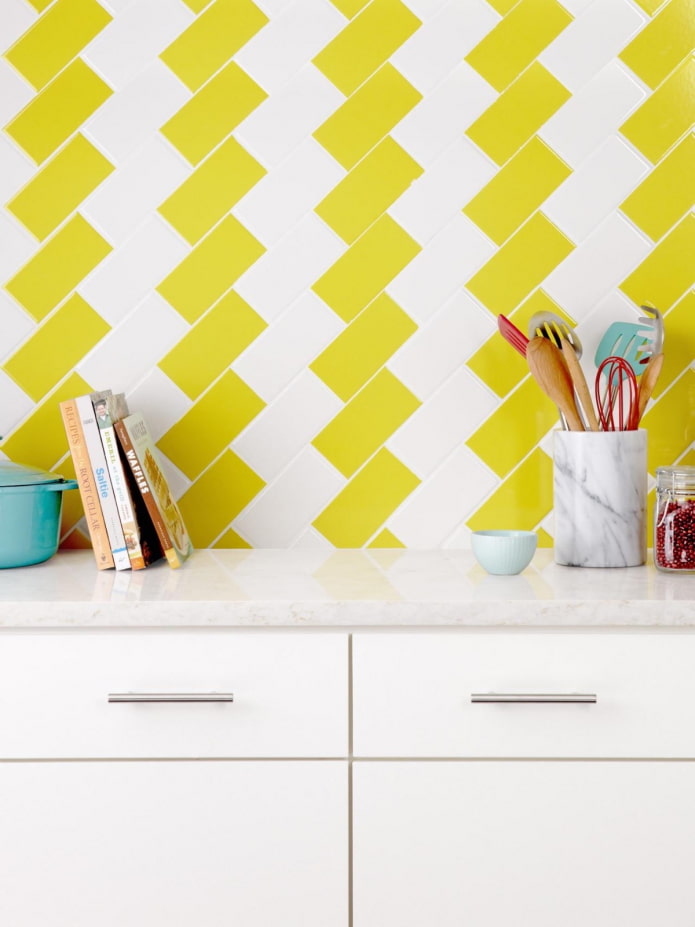
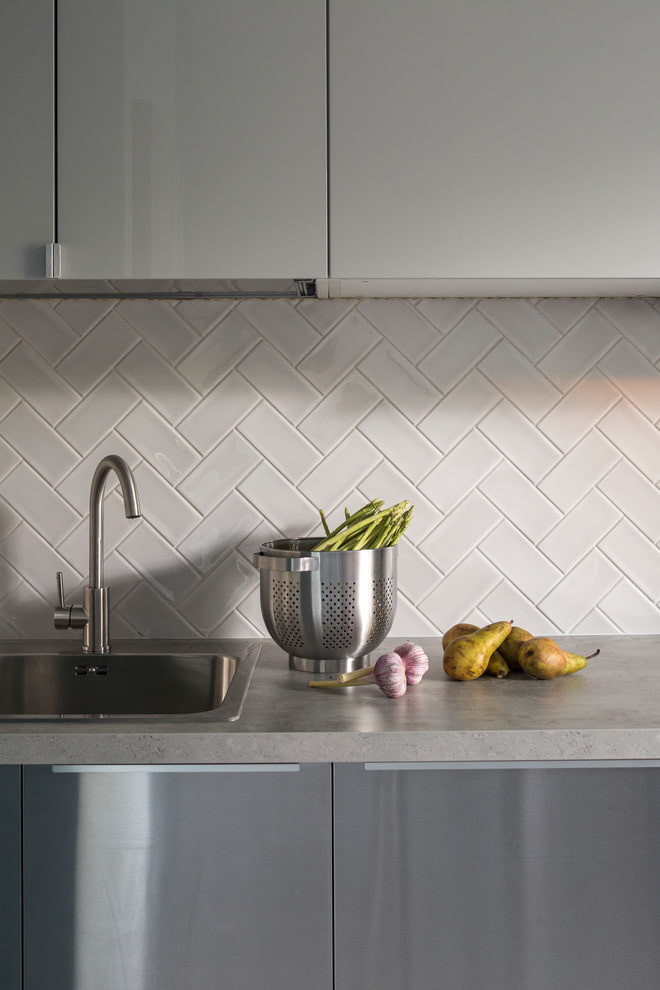
How does a piggy apron look in different interior styles?
Piggy tiles are so multifunctional that they will fit into any interior.
Provence (“French country”) combines rustic simplicity and sophistication. The apron can have a pattern or, on the contrary, act as a background for cozy little things and an antique set.
White tiles will fit into a spacious loft with rough textures, which will serve as a contrast to industrial furniture. An interesting option is when the smooth glossy coating of the apron echoes the textured brickwork.
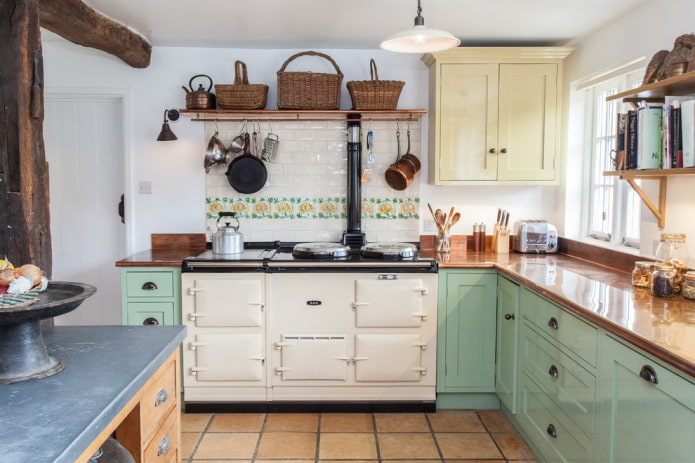
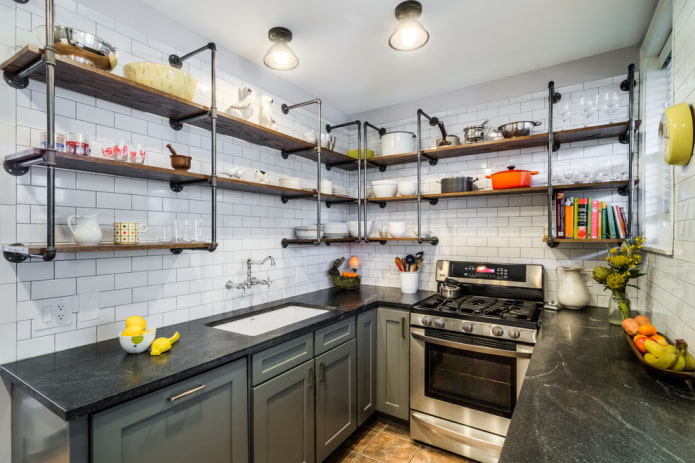
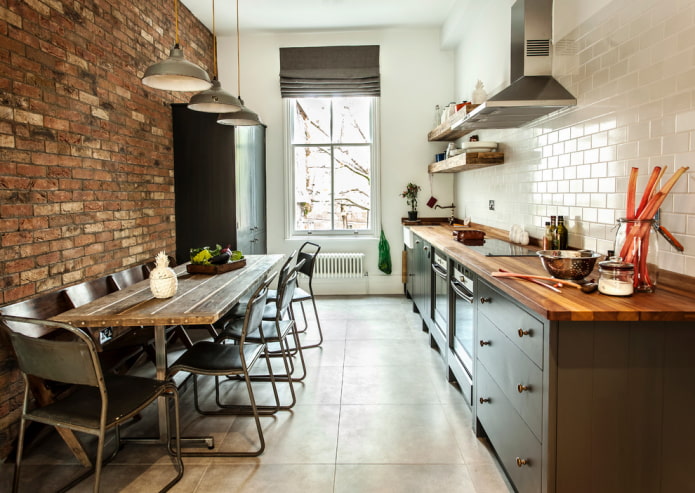
Due to its laconic form, the hog will harmoniously fit into both modern and Scandinavian styles of the kitchen.
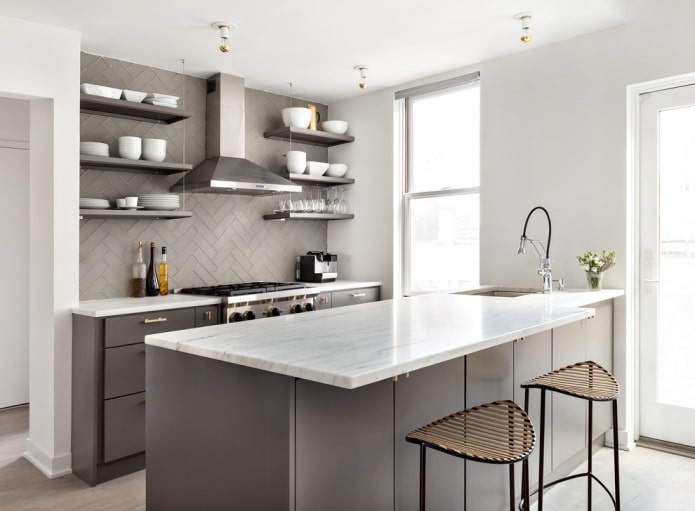
The photo shows a kitchen in a modern direction with tiles laid in a herringbone pattern.
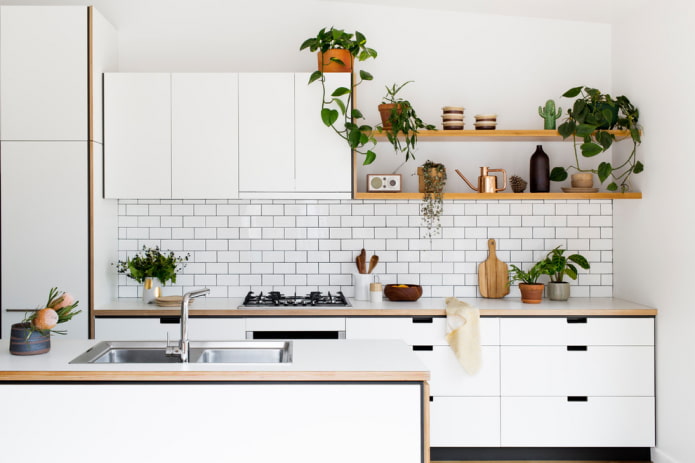
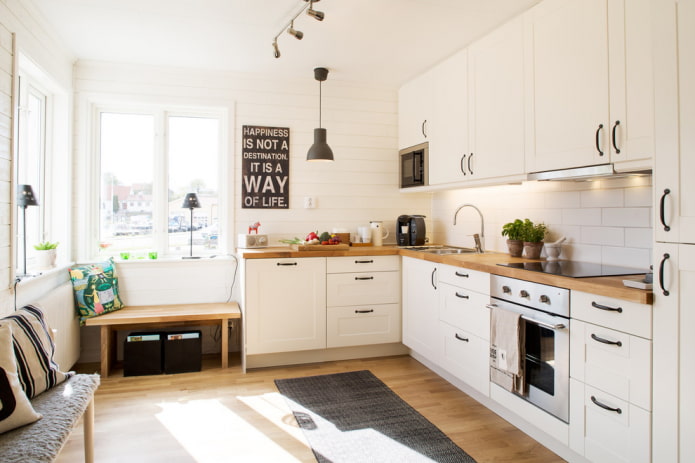
Beige kabanchik will find its application in the classic style, setting off the splendor of a luxurious set and rich decorative elements.
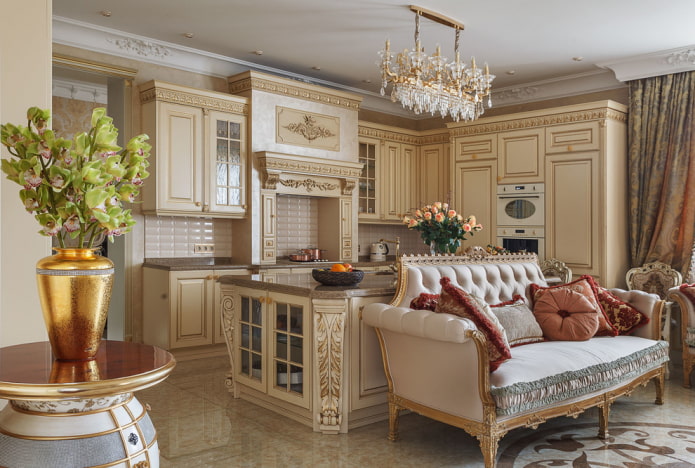
Now reading:
- Your Ultimate Guide to Buying a Used Skoda Octavia
- Organizing shoe storage in the hallway: 70+ ideas and photos for a compact solution.
- Scandinavian interior: unique features and inspiration in 42 photo examples.
- Children’s room for two children: 75 photos and creative design ideas
- How to patch a hole or crack in a polycarbonate greenhouse? 5 useful tips for gardeners.